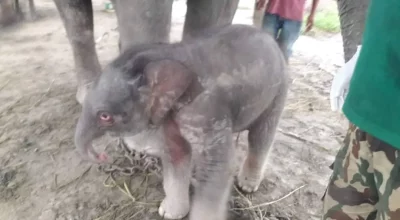
Kathmandu, Sept 23: For the first time in 10 years, Nepal’s foreign reserves have declined and the ability to import goods and services has dwindled by nearly half in four years, leading to fears about the country’s economic health.
In the fiscal year 2015-16, even when suffering under a blockade, Nepal had foreign exchange reserves sufficient to import goods for 14.1 months. By the fiscal year 2018-19, that reserve had shrunk to Rs 1039.91 billion, just enough to import goods for 7.8 months. This has not only placed the country’s economy in a risky situation but is also likely to deter foreign investment as investors seek assurances of profit repatriation, according to economists.
“For a country like Nepal, whose economy is heavily dependent on imports, foreign exchange reserves should be adequate to sustain imports for at least six months,” said Chandan Sapkota, an economist. The share of import in trade is as high as 94 percent as of last fiscal year, which means the country is heavily dependent on imports, even for essential products.
As the government aims for an economic growth of 8.5 percent in the current fiscal year, up from 6.8 percent last fiscal year, the Nepal Rastra Bank, sensing a surge in imports, has reduced maintenance of foreign exchange for sustaining the import of goods and services for seven months, down from last year’s eight months.
Central bank officials said that maintaining a seven-month import reserve was adequate, as per international standards.
“We are confident that we can maintain foreign exchange reserves for seven months of imports as targeted by the monetary policy this fiscal year,” said Sarita Bhatta Adhikari, chief of the foreign exchange management department at the central bank.
In February, the International Monetary Fund (IMF) asked Nepal not to allow foreign exchange reserve to decline below import levels of five months. In the last two decades, Nepal has always had reserves for over five months of imports, according to the IMF.
However, more worrying is the fact that reserves declined in absolute terms last fiscal year for the first time in 10 years. Forex reserves declined to Rs1.03 trillion last fiscal, down from Rs1.1 trillion the previous year, despite a reduced growth rate of imports. However, absolute imports, which occupy a large share of the foreign exchange outflow, increased by 13.9 percent to 25.8 percent. The last time forex reserves had declined was in the fiscal year 2009-10, by seven percent.
According to Bhatta, even in the early months of the current fiscal year, the downward spiral in the foreign exchange reserve continues.
“If the situation worsens, the government has more to do than the Nepal Rastra Bank,” said Bhatta. “The government can take measures to discourage the import of goods which contribute little to the economy but only deplete foreign exchange.”
The government, through the current budget, has announced that it would discourage the import of unnecessary luxury and hazardous goods and services. The government had also presented a bill at Parliament on safeguards, antidumping and countervailing to reduce unnecessary imports to bring the increasing trade deficit into control.
The central bank, on the other hand, tightened rules for vehicle purchases in November last year, making it mandatory for a consumer to make a downpayment of half the price, reduced the foreign exchange availability against passports to $1,500 from $2,500 for a single trip, and foreign exchange availability for migrant workers to $200 per person from $500.
This situation, coupled with the decreasing outflow of migrant workers in the last few years, is worrying as remittance is the largest source of foreign exchange in the country. In the last fiscal year, their number declined by 32.6 percent.
However, analysts see a silver lining because of two factors—Visit Nepal 2020 and the reopening of Malaysia for Nepali migrant workers.
“Because of these two factors, I expect that Nepal will have enough foreign exchange reserves to sustain the imports for at least six months in a few years,” said Nara Bahadur Thapa, former chief of the research department at the Nepal Rastra Bank.
However, central bank officials said they would not shy away from taking severe measures to control the outflow of foreign exchange if the situation worsens.
“We may be forced to reduce the availability for foreign exchange for travelling abroad further if the situation deteriorates,” warned Deputy Governor Chintamani Siwakoti at a programme organised by the Society of Economic Journalists Nepal last month. (Source: The Kathmandu Post)














